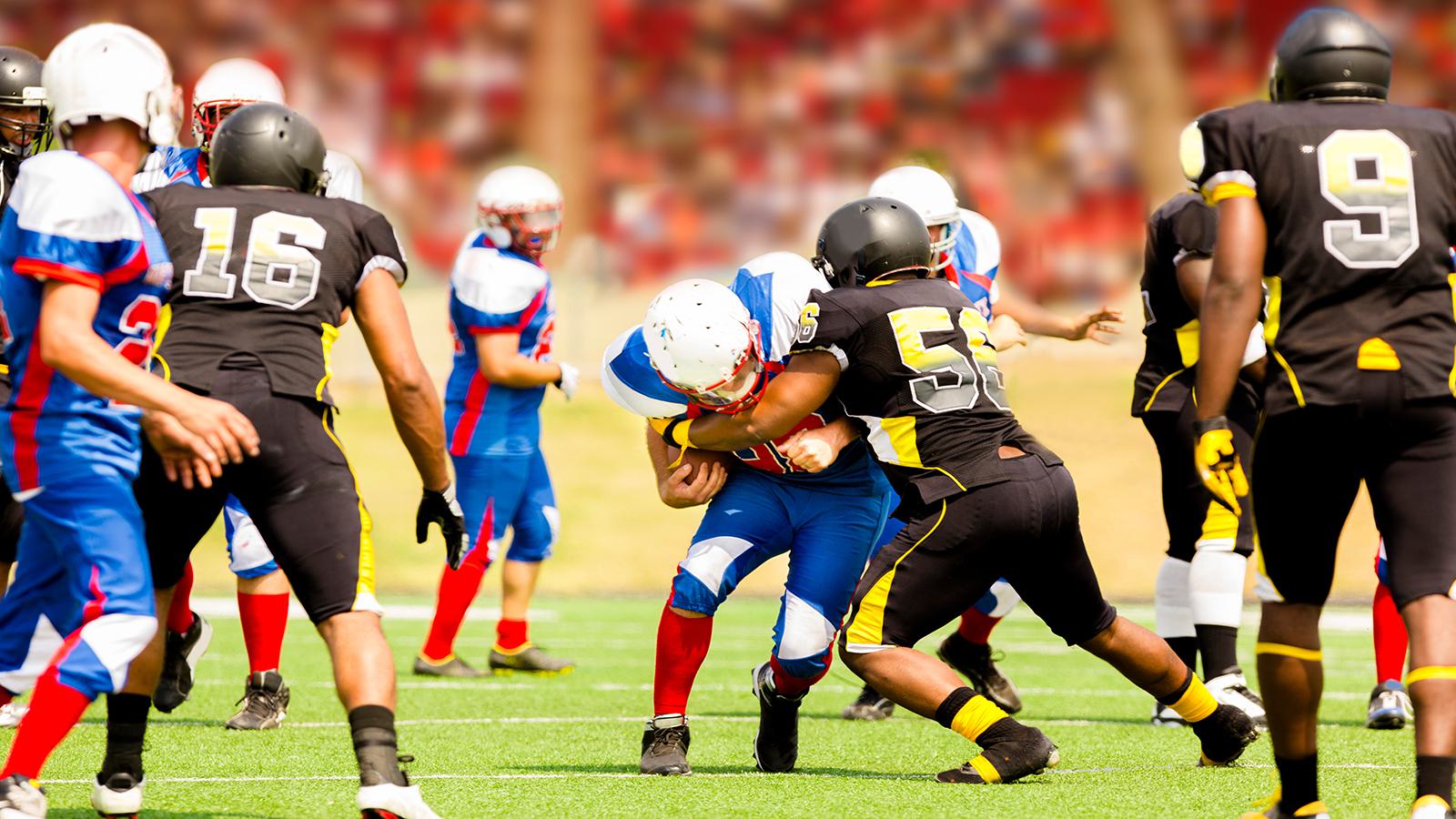June 21, 2021
College Athletic Scholarships: How to Play the Game

So, your kid is the next LeBron James or Megan Rapinoe. Congratulations, but this article isn’t for you, because your child is either going straight to the pros or is an elite athlete and will likely have many scholarship offers. You can skip the rest of this article and save yourself the 10 minutes. But if your child is competitive in their chosen sport and you’re looking for some guidance on how to get a college athletic scholarship, then you’ll find this beneficial.
What are the chances?
Luckily, there is some good data available when it comes to this question. The first step is to get an idea of how much athletic aid is available for your child in their sport. You’ll want to learn how many high school athletes play it, how many of those compete in college, and how many potential scholarships are available for them. For example, if your child is an aspiring softball player, the ScholarshipStats.com data shows that there were 389,206 high school softball players last year. There were 33,494 college players. That’s an 8.5% chance of playing in college and a 1.7% chance of playing NCAA Division I. You can also see that the NCAA limits Division I softball scholarships to 12 per school and the average scholarship amount is $18,267.
There are scholarship limits for each NCAA Division—I, II and III—and for each sport. However, not every school fully funds those scholarships. Even though a school is able to offer 14 scholarships, they may be willing to fund only 10 scholarships.
Headcount sports are those that limit the number of athletes per team who can receive scholarships. Currently, the headcount sports are men’s and women’s basketball, FBS football, women’s tennis, women’s gymnastics and women’s volleyball—all in NCAA Division I. For example, men’s and women’s basketball are limited to 13 and 15 scholarships, respectively. So, a women’s basketball team could offer 15 scholarships to 15 individuals, assuming that the school were to use all of its scholarships. However, it is important to note that some of those 15 individuals might not receive full scholarships. “Headcount” simply means that the school cannot give scholarships to more than the allotted number of athletes.
In contrast, scholarships may be split among multiple athletes in every other sport—so-called equivalency sports. For example, an NCAA Division I men’s or women’s ice hockey team can offer up to 18 total scholarships, which can be offered as 18 full rides, 36 half scholarships, or any combination the coach sees fit, so long as the total scholarship value does not add up to more than the value of 18 full scholarships.
If your child is an elite athlete in one of those six headcount sports, they could receive a full scholarship. Otherwise, most other scholarship offers are partial. In fact, in the recent book “Who Gets In and Why,” author Jeffrey Selingo wrote, “Most of your neighbors who tell you that their child earned a ‘sports scholarship’ actually received something worth less than a very used car.”
Start by checking your sport to see what the scholarship potential is, then, when you are looking into particular schools, you can ask how many scholarships they actually offer. The more they fund, the better your chance of receiving some money. Keep in mind that those scholarships are spread out among freshman, sophomores, juniors and seniors. Each year, there might only be about a quarter of those scholarships up for grabs among the incoming freshman, depending on how they are allocated among the current student athletes.
The proverbial “free-ride” full scholarship gets a lot of press, but in reality, most athletic scholarships cover only a fraction of the cost of college. According to ScholarshipStats.com, Southern Methodist University gave the largest athletic scholarships in the 2019-20 school year, averaging $48,500. While that is significant, families still had to come up with another $28,000 to cover the full cost of that year, let alone the other three years. Across all of NCAA Division I, the average athletic scholarship is far less at approximately $18,000. And at the NCAA Division II level, total athletic scholarships were roughly one-fourth that of the Division I level. This is not to say, “Don’t try.” Rather, do your homework to put the odds in your favor.
Academic Aid
The best way to maximize your total financial aid package is to combine any athletic aid with possible academic or merit aid. Trying to find schools where your child will be among the top 25% of applicants academically will increase their chances of getting a decent offer for academic aid. This will also make you a more attractive recruit for coaches because they may not need to spend as much of their athletic scholarship money.
The overall goal is to get a quality education without breaking the bank. Perhaps your child has their sights set on attending a certain school, but there isn’t much athletic aid available for various reasons. A strong academic record could make that school a viable option financially if you can help enhance the school’s academic profile.
Eligibility
Beginning early in your child’s high school career, check the eligibility requirements for competing at different collegiate levels. NCAA Division I, II, III, NAIA and NJCAA all have different levels of eligibility criteria. Certain test scores, GPAs and core classes are required for each. In addition to the eligibility requirements, if you child plans to play in NCAA Division I or Division II, they’ll need to create an account with the NCAA Eligibility Center (formerly NCAA Clearinghouse) to get their certification of eligibility. If they are looking at an NAIA school, they can register for eligibility at play.mynaia.org.
For the love of the game
So far, we have talked exclusively about scholarships. However, there are hundreds of schools that field competitive teams but are not allowed to offer athletic scholarships. Most of those schools are in NCAA Division III, but some are Division I, such as the Ivy League. It just so happens that many non-scholarship schools are some of the most selective colleges and universities in the country, and a good athlete can use his or her skills to gain a significant advantage in the admissions process.
According to ScholarshipStats.com, Harvard’s recent admission rate was 5%, but athletes were 15% of the student body. In the same year, Princeton admitted 7% of all applicants, but athletes comprised 20% of the student body. A similar dynamic has been observed at other highly selective schools, including Amherst, Bowdoin, Middlebury, MIT, Williams and the U.S. service academies—Air Force, Army and Navy.
This is largely due to the fact that these small to mid-sized schools often have just as many sports teams and roster spots as large universities, so if they are to remain competitive, they must admit athletes. In his aforementioned book, Selingo observed, “In the fall of 2018, Amherst enrolled 676 athletes, thirty-six more athletes than the University of Alabama overall. Amherst has 200 more athletes than Northwestern University.”
So, if a student-athlete is willing to play their sport for the love of the game, their talent could be their ticket into a selective school. However, just like those seeking an athletic scholarship, the key to gaining admission to a selective school is getting the attention of the coach, so that the coach can lobby the admissions office on your behalf. In his recent book, “The Price You Pay for College,” Ron Lieber writes, “The admissions edge is real at these schools, and they grant that advantage through a so-called tips system that coaches use to boost the number of applications from favored prospects.”
The happiness factor
I was a college athlete once (a long time ago). I was fortunate to make it through most of my career with relatively few injuries. However, not everyone is that lucky. Choosing a school where your child will be happy, regardless of playing time, is important. Lots of things can happen to prevent them from playing all four years. A severe injury, loss of interest, a coach leaving or elimination of the program are just a few. Will your child be happy at that school without the sport? Does the school have the major they desire? Is their scholarship guaranteed for all four years? Or just year by year? How long does it take kids to graduate? A fifth year—without a scholarship—can be costly! What is the viability of the school financially? COVID-19 has put a lot of pressure on schools to reduce costs, including cutting athletic programs. In some cases, cost-cutting was not enough, and colleges were forced to shut their doors entirely. Another complication due to COVID-19 is a backlog of student athletes. Many athletes were granted another year of eligibility. So incoming freshman are finding fewer scholarships available, fewer roster spots, and less playing time. Schools may not be able or allowed to fund more scholarships if they are extending offers for seniors granted another year to compete.
This article is not an all-encompassing guide, but it is meant to provide some food for thought and get you thinking about different aspects of the decision. You’ll need to do some research to find out when college coaches start recruiting in a particular sport, when you should reach out to them, and when they are allowed to be in communication with you. You can use reputable recruiting services to help build a profile and gather helpful information. Casting a wide net when searching will increase your chances of getting a more generous offer, even if it’s not from your top-choice school. The best outcome is to find a great fit for your child, and there isn’t a right or wrong way to do that.
This commentary originally appeared June 5 on thestreet.com.
The opinions expressed by featured authors are their own and may not accurately reflect those of Buckingham Strategic Wealth®. This article is for general information only and is not intended to serve as specific financial, accounting or tax advice. Individuals should speak with qualified professionals based upon their individual circumstances. The analysis contained in this article may be based upon third-party information and may become outdated or otherwise superseded without notice. Third-party information is deemed to be reliable, but its accuracy and completeness cannot be guaranteed.
By clicking on any of the links above, you acknowledge that they are solely for your convenience, and do not necessarily imply any affiliations, sponsorships, endorsements or representations whatsoever by us regarding third-party websites. We are not responsible for the content, availability or privacy policies of these sites, and shall not be responsible or liable for any information, opinions, advice, products or services available on or through them. IRN-21-2193
© 2021 Buckingham Strategic Wealth®
Category
Education FundingContent Topics
About the Author

Jake Bleyenberg
Wealth Advisor
